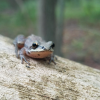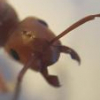yes
- Formiculture.com
- Forums
- Gallery
- Members
- Member Map
- Chat


Best Answer rbarreto , March 11 2020 - 11:30 AM
This is a Lasius claviger queen
Go to the full post 
yes
There is a important time for everything, important place for everyone, an important person for everybody, and an important ant for each and every ant keeper and myrmecologist alike
"God made..... all the creatures that move along the ground according to their kinds (including ants). And God saw that it was good. Genesis 1:25 NIV version
Keeping:
Formica cf. pallidefulva, cf. incerta, cf. argentea
Formica cf. aserva, cf. subintegra
Myrmica sp.
Lasius neoniger, brevicornis
oh yeah, and peitoles
Where are these located on an ant?
Go to the ant, you sluggard; consider its ways and be wise! It has no commander, no overseer or ruler, yet it stores its provisions in summer and gathers its food at harvest. -Proverbs 6: 6-8
My Ant Shop Here I have PPQ-526 permits to ship ants nationwide
Attention Ant-Keepers in South Dakota! Join the SoDak(Society Of Dakotan Ant Keepers)
Why do you say this?This is a Lasius claviger queen
oh yeah, and peitoles
Where are these located on an ant?
the best way to explain is to show you the connecting tissue of an ant's thorax to it's gaster and then say look for the bump
There is a important time for everything, important place for everyone, an important person for everybody, and an important ant for each and every ant keeper and myrmecologist alike
oh yeah, and peitoles
Where are these located on an ant?
one of the main identifiers of an ant in general is the presence of the petiole, the little waist found in all ants. You don't identify ants by the petiole, but by the number and shape of the nodes on it. Myrmicines for example have a pair of ball shaped nodes and ponerines have a single tall node, often relatively large and as tall as the thorax and gaster.
You can differentiate Lasius and Prenolepis via peitoles however
There is a important time for everything, important place for everyone, an important person for everybody, and an important ant for each and every ant keeper and myrmecologist alike
It’s the narrow ‘bridge’ between the thorax and abdomen. It’s where the spines (if any) are located.Where are these located on an ant?oh yeah, and peitoles
"God made..... all the creatures that move along the ground according to their kinds (including ants). And God saw that it was good. Genesis 1:25 NIV version
Keeping:
Formica cf. pallidefulva, cf. incerta, cf. argentea
Formica cf. aserva, cf. subintegra
Myrmica sp.
Lasius neoniger, brevicornis
It’s the narrow ‘bridge’ between the thorax and abdomen. It’s where the spines (if any) are located.
Where are these located on an ant?oh yeah, and peitoles
no, spines are common on the thorax as well
You can differentiate Lasius and Prenolepis via peitoles however
Yes, as well as the huge size difference and proportional differences. the petiolar difference is not necessary.
"God made..... all the creatures that move along the ground according to their kinds (including ants). And God saw that it was good. Genesis 1:25 NIV version
Keeping:
Formica cf. pallidefulva, cf. incerta, cf. argentea
Formica cf. aserva, cf. subintegra
Myrmica sp.
Lasius neoniger, brevicornis
some are
There is a important time for everything, important place for everyone, an important person for everybody, and an important ant for each and every ant keeper and myrmecologist alike
"God made..... all the creatures that move along the ground according to their kinds (including ants). And God saw that it was good. Genesis 1:25 NIV version
Keeping:
Formica cf. pallidefulva, cf. incerta, cf. argentea
Formica cf. aserva, cf. subintegra
Myrmica sp.
Lasius neoniger, brevicornis
The book Ants of North America will help you ID queens FYI
There is a important time for everything, important place for everyone, an important person for everybody, and an important ant for each and every ant keeper and myrmecologist alike
Collection date, antennal clubs, relatively low pilosity and experience with claviger queens.Why do you say this?This is a Lasius claviger queen
Edited by rbarreto, March 11 2020 - 5:23 PM.
My journal featuring most of my ants.
My other journal featuring Formica Bradleyi.
Check our my store here!
Currently Keeping:
Pogonomyrmex Californicus Bicolor & Concolor
Pogonomyrmex Subnitidius
Camponotus Sansabeanus
Collection date, antennal clubs, relatively low pilosity and experience with claviger queens.
Why do you say this?This is a Lasius claviger queen
Looking back at them, it makes sense. Thanks
Wait...how do you do that “best answer” thing???
Edited by Thunder_Birds, March 15 2020 - 2:03 PM.
#Ants4Life
0 members, 2 guests, 0 anonymous users